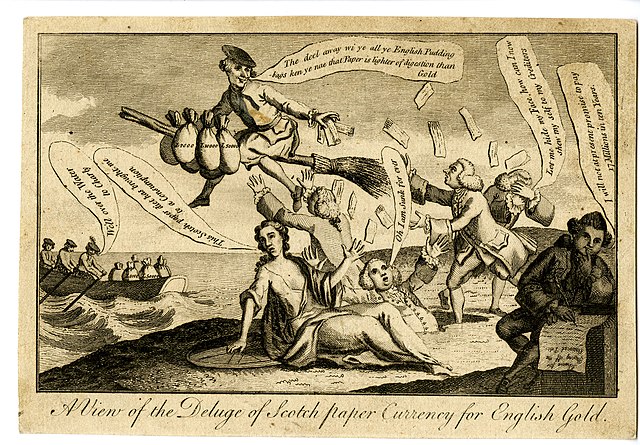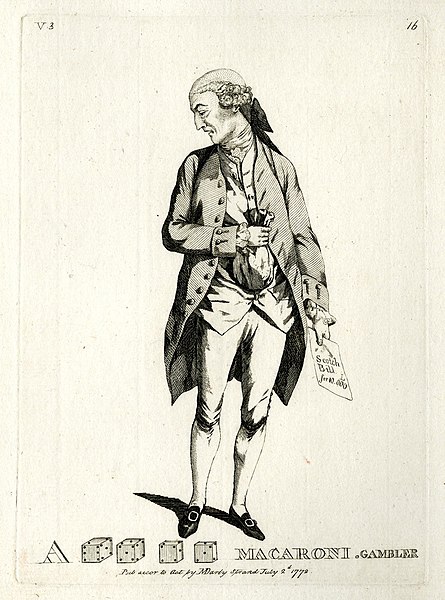Alexander Fordyce was an eminent Scottish banker, centrally involved in the bank run on Neale, James, Fordyce and Down which led to the credit crisis of 1772. He fled abroad and was declared bankrupt, but in time he used the profits from other investments to cover the losses.
Print of Alexander Fordyce, dressed as the Macaroni Gambler with puns on Fordyce's last name (Four-Dice).
Balcarres mansion in the trees – geograph.org.uk – 1465362
Dividend Day at the Bank of England, 1770
The Amsterdam Stock Exchange by P. Fouquet (1729–1800)
British credit crisis of 1772–1773
The British credit crisis of 1772–1773, also known as the crisis of 1772, or the panic of 1772, was a peacetime financial crisis which originated in London and then spread to Scotland and the Dutch Republic. It has been described as the first modern banking crisis faced by the Bank of England. New colonies, as Adam Smith observed, had an insatiable demand for capital. Accompanying the more tangible evidence of wealth creation was a rapid expansion of credit and banking, leading to a rash of speculation and dubious financial innovation. In today's language, they bought shares on margin.

A view of the deluge of Scotch paper currency for English gold. A Scotsman in the air astride a broom is carrying off six large money-bags, three being inscribed "£2,000", "£10,000", and "£50,000". He scatters banknotes or bills; men on the ground, some sinking into a bog. exclaim in horror at his action. In the centre Britannia is seated, she says: "This Scotch paper diet has brought me to a consumption". In the foreground (r.) Lord North seated
Dividend Day at the Bank of England, 1770
Alexander Fordyce, a macaroni gambler with four dice.
Keizersgracht 444–448 was owned by Hope & Co






